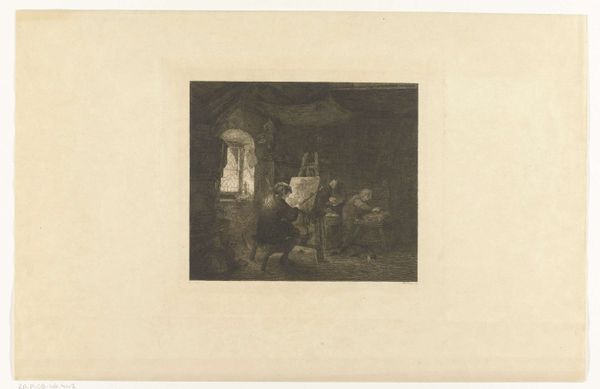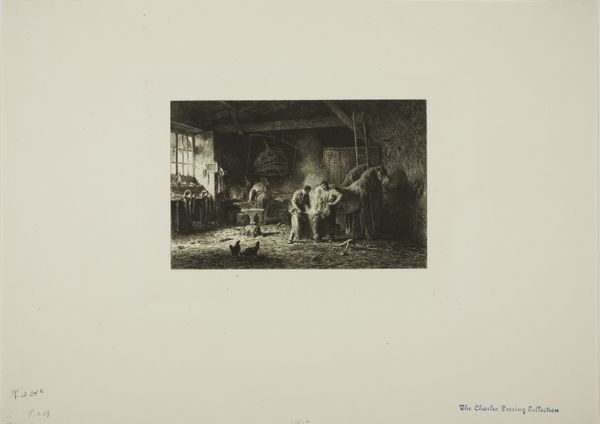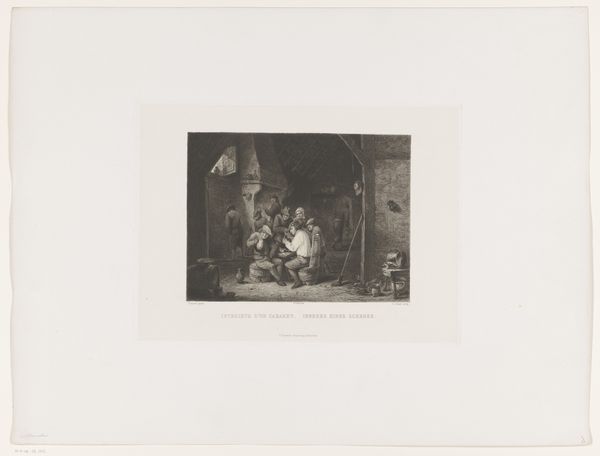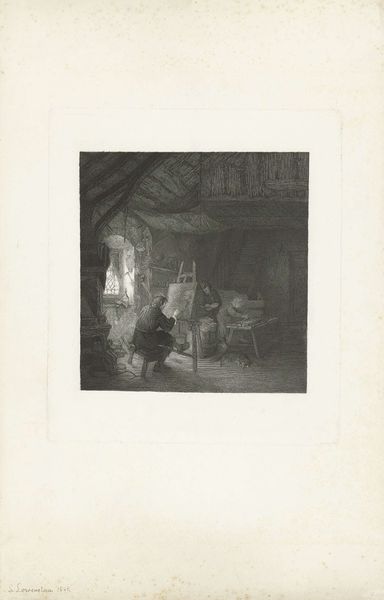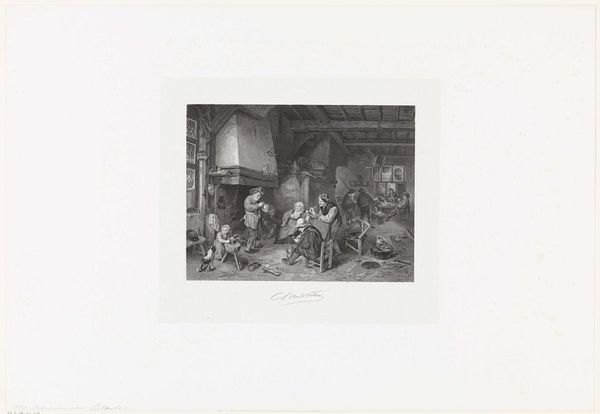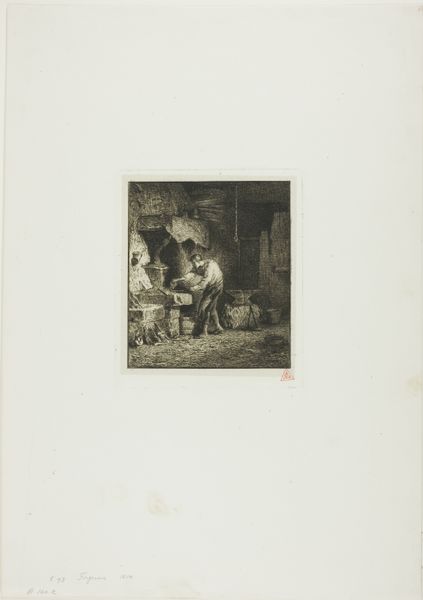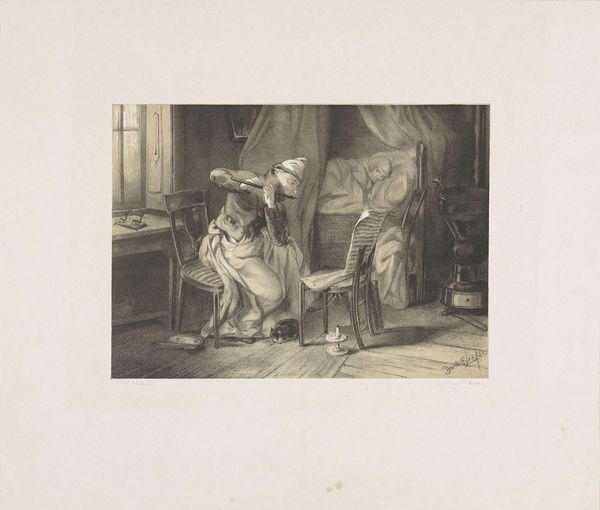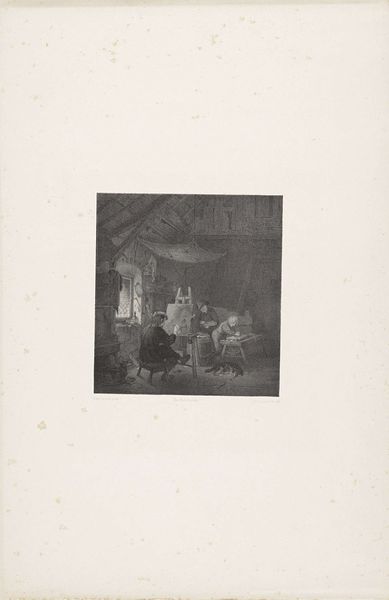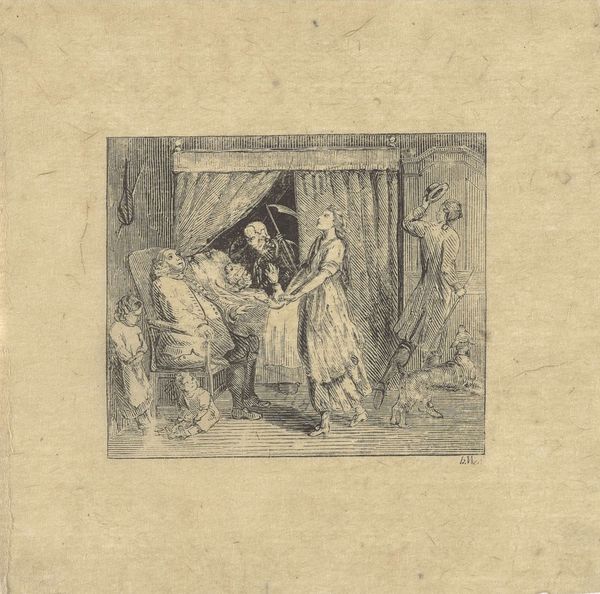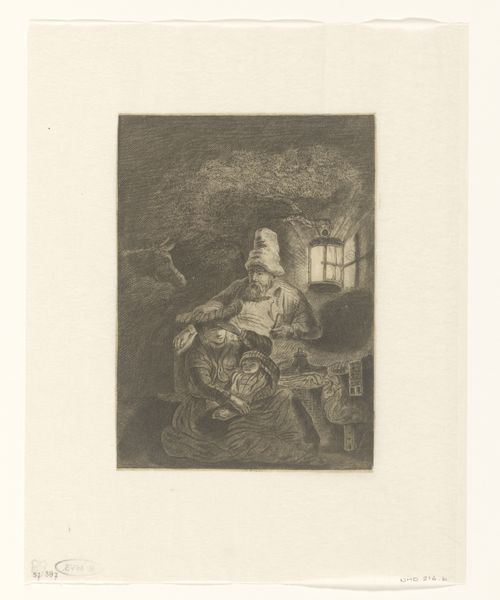
drawing, print, etching, ink
#
drawing
#
medieval
# print
#
etching
#
ink
#
genre-painting
#
realism
Dimensions: height 315 mm, width 275 mm
Copyright: Rijks Museum: Open Domain
Editor: Here we have "Painter in his Studio," a print by Leopold Löwenstam, dating from sometime between 1852 and 1898. I’m struck by the contrast between the dark, almost cramped, interior and the implied activity of the figures. How do you interpret this work, particularly in terms of its composition? Curator: The density of the etching, achieved through layering and cross-hatching, creates a powerful sense of enclosure, almost a cloister, especially with the window suggesting an ecclesiastical precedent. Note how Löwenstam uses the light source to organize the visual elements, directing our gaze from left to right, across the subjects as they go about their artisinal tasks. Do you find any visual devices that contribute to this dynamism? Editor: I see how the ladder in the background leads the eye upward, contrasting with the horizontal work surfaces of the figures. The contrast really emphasizes the working, creative aspect of the painting process. It’s almost performative. Curator: Precisely. Löwenstam is not just representing a painter’s studio; he is offering a comment on the visual processes. The very act of observing is rendered materially within the print through these structural elements. Consider also how the variations of depth are achieved. Editor: The dark, dense foreground gives way to more sparse renderings toward the rear, giving an impression of spaciousness. I appreciate how analyzing these formal elements adds to a richer viewing of this etching. Curator: Indeed, understanding the interplay of light, shadow, and perspective reveals Löwenstam’s manipulation of the print medium to not only depict, but also to engage our sense of depth and creative movement.
Comments
No comments
Be the first to comment and join the conversation on the ultimate creative platform.
